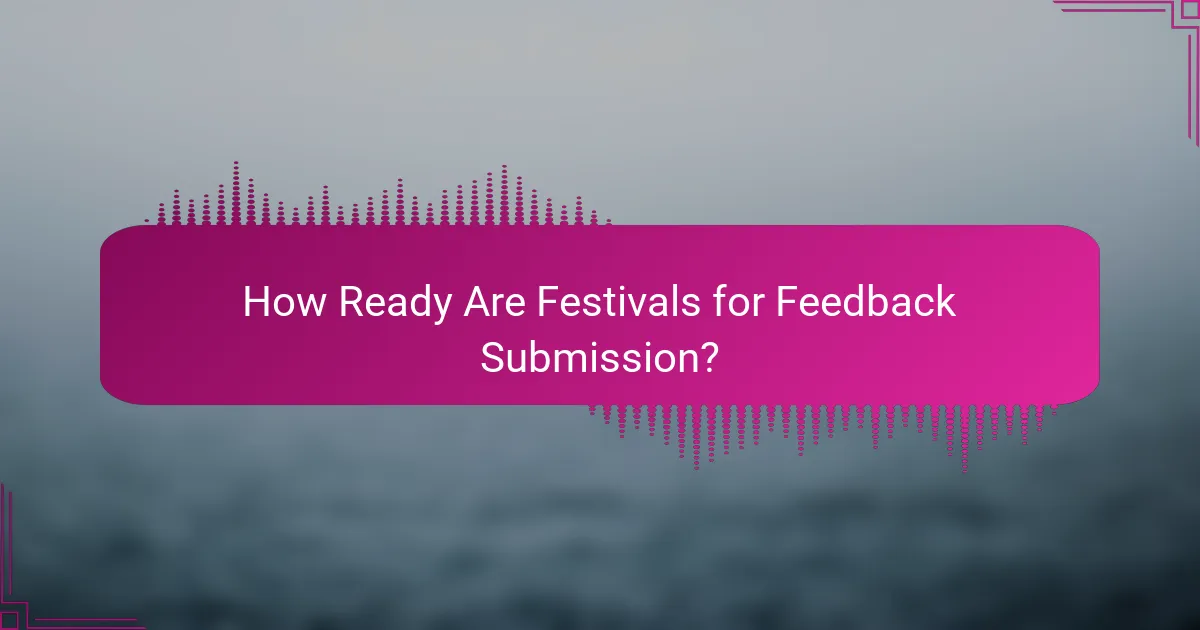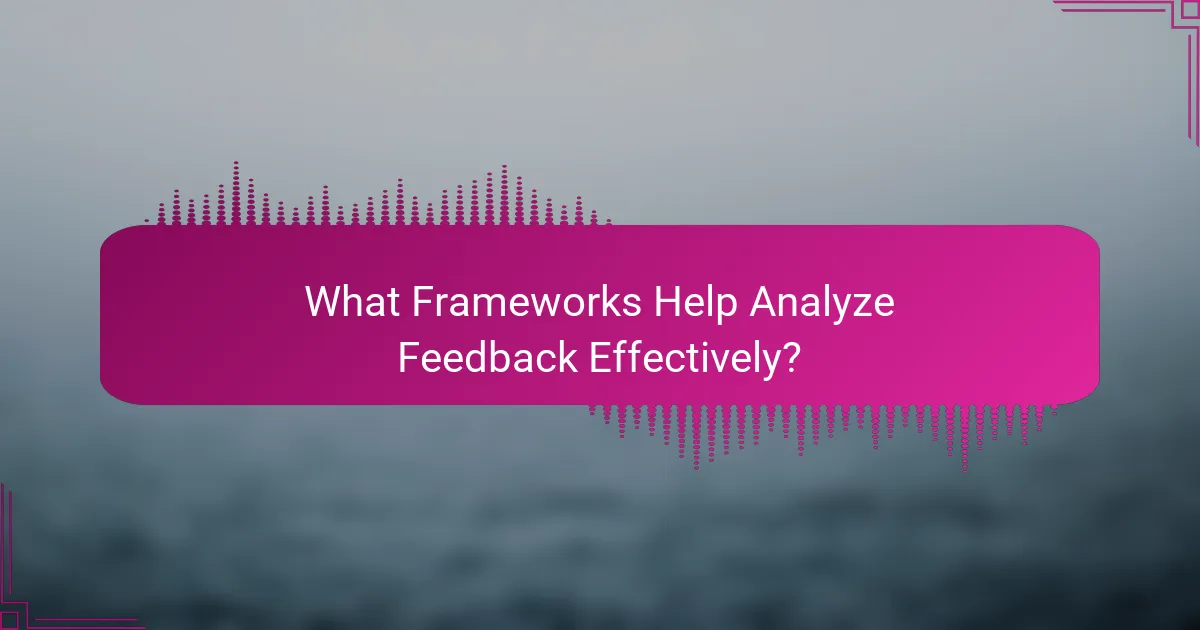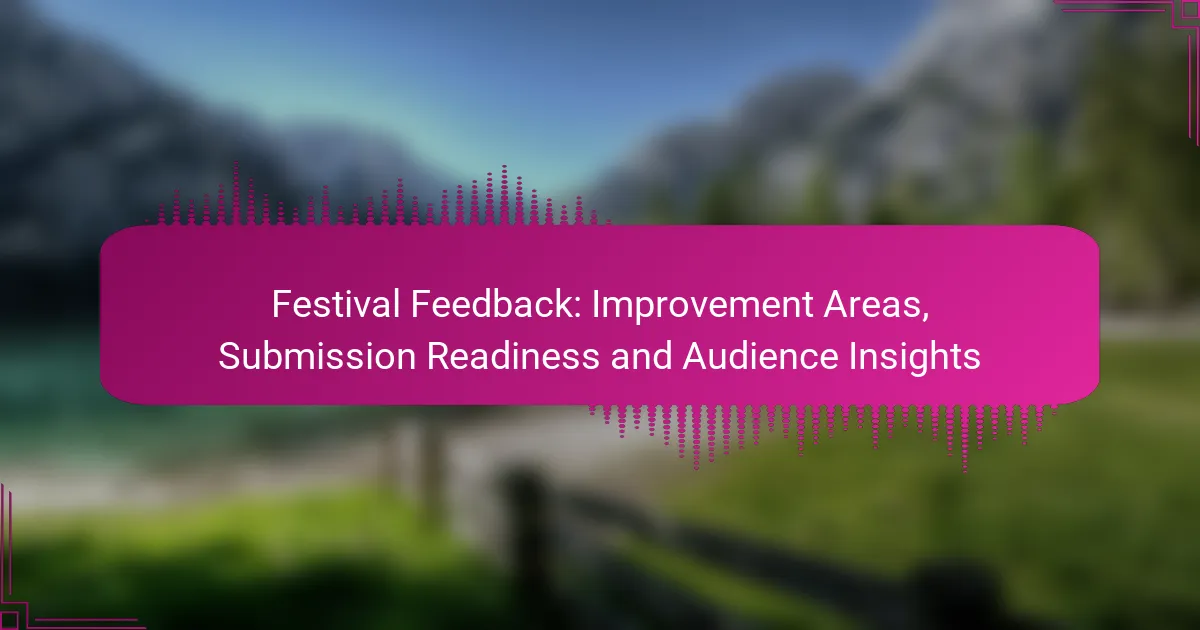Gathering feedback at festivals is essential for continuous improvement and enhancing attendee experiences. By leveraging modern tools and interactive strategies, organizers can effectively collect valuable insights that highlight areas for enhancement, such as attendee satisfaction and operational efficiency. Additionally, understanding the readiness of festivals for feedback submission can help streamline the process and ensure that audience insights are utilized effectively.

How Can Festivals Improve Feedback Collection?
Festivals can enhance their feedback collection by adopting modern tools and strategies that engage attendees effectively. By utilizing digital methods and creating interactive experiences, organizers can gather more meaningful insights to drive improvements.
Utilize Digital Surveys
Digital surveys are an efficient way to collect feedback from festival-goers. Platforms like SurveyMonkey or Google Forms allow organizers to create customized questionnaires that can be distributed via email or social media. Aim for concise surveys that take no more than 5-10 minutes to complete to maximize response rates.
Consider using a mix of multiple-choice questions and open-ended responses to capture both quantitative and qualitative data. This approach helps in identifying specific areas for improvement while allowing attendees to express their thoughts freely.
Implement Real-Time Feedback Tools
Real-time feedback tools, such as mobile apps or SMS-based systems, enable attendees to share their experiences instantly. This immediate feedback can highlight issues as they arise, allowing organizers to address concerns promptly. For example, using a dedicated festival app can facilitate quick ratings for performances or amenities.
Ensure that these tools are user-friendly and accessible to all attendees. Providing clear instructions on how to use these tools can encourage participation and enhance the overall feedback quality.
Engage Attendees via Social Media
Social media platforms are powerful channels for gathering feedback from festival attendees. Encourage participants to share their experiences using specific hashtags or by tagging the festival’s official accounts. This not only increases engagement but also provides real-time insights into attendee sentiment.
Monitor social media conversations to identify trends and common themes in feedback. Responding to comments and messages can also foster a sense of community and show attendees that their opinions are valued.
Offer Incentives for Feedback
Offering incentives can significantly boost feedback participation rates. Consider providing discounts on future tickets, exclusive merchandise, or entries into a raffle for those who complete surveys or provide feedback. This strategy not only encourages participation but also enhances attendee satisfaction.
Clearly communicate the incentives in all feedback requests to motivate attendees. Make sure the rewards are appealing and relevant to your audience to maximize engagement.
Conduct Post-Event Interviews
Post-event interviews can provide in-depth insights into the attendee experience. Select a diverse group of participants for interviews to gather a range of perspectives. These conversations can uncover detailed feedback that surveys might miss.
Schedule interviews promptly after the event while experiences are still fresh in attendees’ minds. Use open-ended questions to encourage detailed responses and facilitate a comfortable dialogue.

What Are the Key Areas for Improvement?
Key areas for improvement at festivals often focus on enhancing attendee satisfaction, optimizing entry processes, coordinating with vendors, and increasing accessibility. Addressing these areas can significantly elevate the overall experience and operational efficiency.
Enhancing Attendee Experience
Improving the attendee experience involves creating a welcoming atmosphere and providing engaging activities. Consider incorporating feedback mechanisms, such as surveys or suggestion boxes, to understand what attendees value most.
Offering diverse entertainment options, food choices, and interactive installations can cater to a wider audience. For instance, including local cuisine and cultural performances can enhance the festival’s appeal and create memorable experiences.
Streamlining Entry Processes
Efficient entry processes are crucial for minimizing wait times and enhancing attendee satisfaction. Implementing digital ticketing solutions can reduce bottlenecks and speed up the check-in process.
Consider establishing multiple entry points and clear signage to guide attendees. Training staff to manage queues effectively can also help maintain a smooth flow, ensuring that attendees can enjoy the festival without unnecessary delays.
Improving Vendor Coordination
Effective vendor coordination is vital for ensuring a seamless experience for both attendees and vendors. Establish clear communication channels and schedules to keep all parties informed about their roles and responsibilities.
Regular meetings before the event can help align expectations and address any potential issues. Providing vendors with a detailed layout of their assigned areas can also facilitate better organization and enhance service delivery.
Increasing Accessibility Options
Increasing accessibility options ensures that all attendees can enjoy the festival. This includes providing wheelchair access, designated seating areas, and sensory-friendly spaces for individuals with sensory sensitivities.
Consider offering materials in multiple formats, such as large print or braille, and ensuring that staff are trained to assist attendees with disabilities. Collaborating with local organizations can help identify specific needs and improve overall accessibility.

How Ready Are Festivals for Feedback Submission?
Festivals vary in their readiness for feedback submission, often depending on their established processes and technology. Assessing their platforms, guidelines, and user experience can reveal how effectively they gather and utilize audience insights.
Assessing Submission Platforms
Evaluating submission platforms involves examining the tools and systems festivals use to collect feedback. Common platforms include online forms, dedicated apps, and social media channels. Each option has its strengths; for instance, online forms can streamline data collection, while social media can enhance engagement.
Festivals should consider the accessibility of these platforms. Ensuring that feedback mechanisms are easy to find and use can significantly increase participation rates. A good practice is to offer multiple submission methods to cater to different audience preferences.
Evaluating Submission Guidelines
Clear submission guidelines are crucial for effective feedback collection. Festivals should provide straightforward instructions on how to submit feedback, including deadlines and any specific information required. This clarity helps avoid confusion and ensures that the feedback received is relevant and actionable.
It’s beneficial to keep guidelines concise and user-friendly. For example, outlining the feedback process in bullet points can make it easier for attendees to understand what is expected. Festivals might also consider providing examples of useful feedback to guide submissions.
Testing User Experience
User experience testing is essential to ensure that the feedback submission process is smooth and intuitive. Festivals should conduct usability tests with real users to identify any pain points in the submission process. This can include checking for technical issues or confusing interfaces.
Gathering feedback on the feedback process itself can be valuable. Festivals might implement a short survey after submission to assess how easy or difficult users found the experience. Continuous improvement based on this feedback can lead to higher submission rates and more valuable insights.

What Insights Can Be Gained from Audience Feedback?
Audience feedback provides valuable insights that can enhance future festival experiences. By analyzing responses, organizers can identify strengths and weaknesses, allowing for targeted improvements and better alignment with audience expectations.
Identifying Popular Attractions
Understanding which attractions resonate most with attendees is crucial for future planning. Feedback can reveal the most enjoyed performances, activities, or installations, helping organizers prioritize these elements in subsequent events.
For instance, if surveys indicate that food trucks featuring local cuisine were particularly popular, organizers might consider expanding this offering or including more diverse culinary options. Tracking attendance at specific attractions can also provide quantitative data to support these insights.
Understanding Demographic Preferences
Audience feedback can highlight the preferences of different demographic groups, such as age, gender, or location. This information is essential for tailoring marketing strategies and programming to better meet the interests of various segments.
For example, if younger attendees express a preference for electronic music, while older participants favor classic rock, organizers can adjust lineups accordingly. Segmenting feedback by demographics can help in crafting targeted communications and enhancing overall engagement.
Measuring Overall Satisfaction
Overall satisfaction is a key metric for assessing the success of a festival. Gathering feedback through post-event surveys allows organizers to gauge attendee enjoyment and identify areas needing improvement.
Common metrics include satisfaction ratings on a scale from 1 to 10 and open-ended questions for qualitative insights. Aiming for a satisfaction rate of at least 80% can serve as a benchmark for success, while analyzing negative feedback can reveal specific pain points to address in future events.

What Frameworks Help Analyze Feedback Effectively?
To analyze festival feedback effectively, frameworks like SWOT analysis, surveys, and audience segmentation are crucial. These tools help identify strengths, weaknesses, opportunities, and threats, ensuring that feedback is actionable and relevant to future planning.
SWOT Analysis for Festivals
SWOT analysis is a structured planning method that evaluates the internal and external factors affecting a festival. By categorizing feedback into strengths, weaknesses, opportunities, and threats, organizers can gain a comprehensive view of their event’s performance and areas for improvement.
For instance, strengths might include a strong local following or unique programming, while weaknesses could involve logistical challenges or limited marketing reach. Opportunities may arise from partnerships with local businesses, whereas threats could include competition from other events or economic downturns.
To implement a SWOT analysis, gather feedback from various sources, including surveys, social media, and direct audience interactions. Regularly updating this analysis can help keep the festival aligned with audience expectations and market trends.
